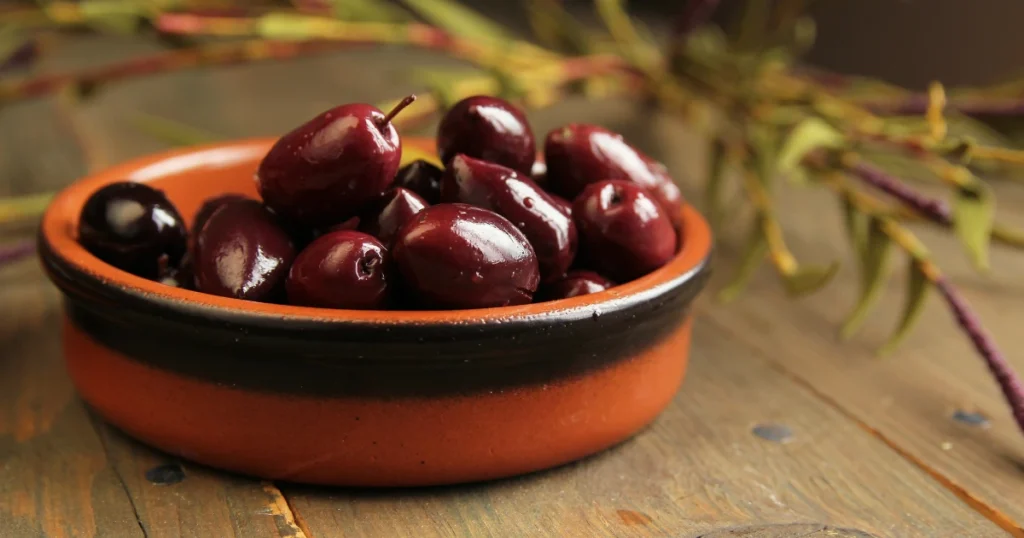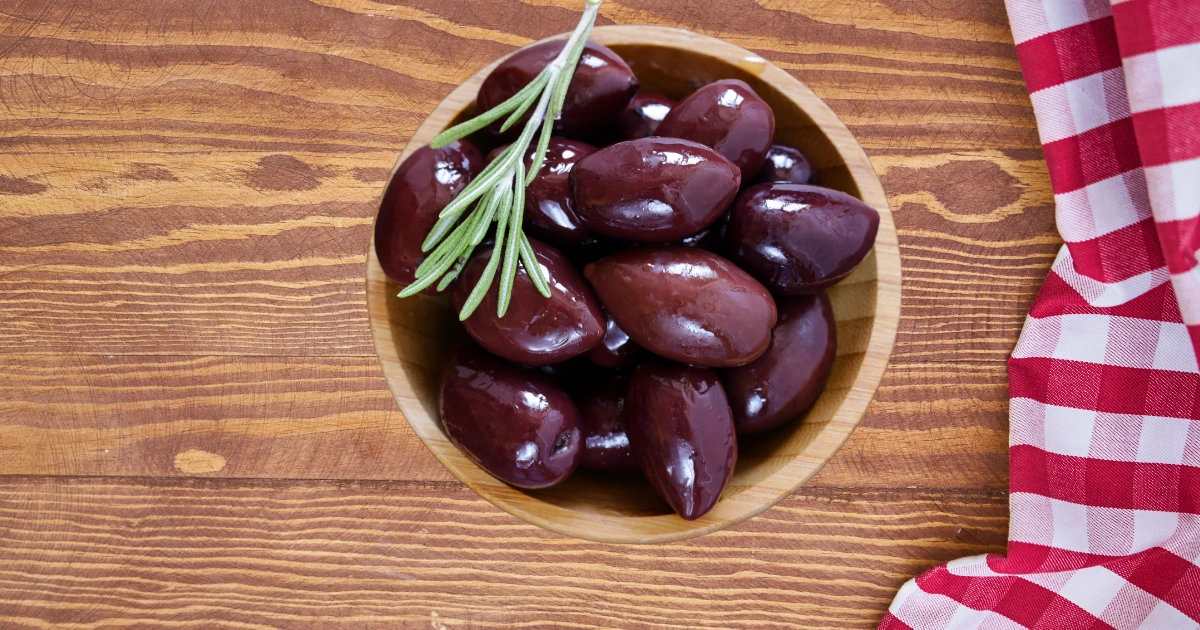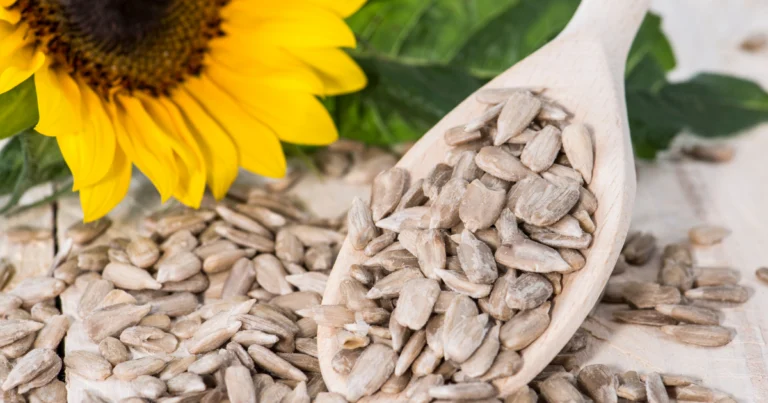Kalamata Olives: Everything You Need to Know
Kalamata olives are renowned for their distinct taste, deep color, and rich history. Whether you’re an olive enthusiast or just exploring the world of Mediterranean cuisine, Kalamata olives hold a special place in many dishes. In this post, we’ll discuss the history of these olives, their benefits, and the nutritional value of olives, along with some fun facts and a FAQ section.
What are Kalamata Olives?
Kalamata olives are a type of black olive native to Greece, specifically the Kalamata region, from which they get their name. Unlike other types of olives, Kalamatas are often large, almond-shaped, and have a dark purple to black color. Their unique flavor profile combines tanginess, a rich, fruity taste, and a slightly bitter note, making them a favorite in Mediterranean cuisine.
Origin and History of Kalamata Olives
The history of Kalamata olives dates back thousands of years to Ancient Greece, where they were first cultivated. Olives were considered sacred to the Greeks and even featured in their mythology. Today, these olives are grown not only in Greece but also in parts of Turkey, Italy, and Spain.
these olives are typically harvested from the olive tree species Olea europaea. The best Kalamata olives are grown in the fertile soil of the Peloponnese Peninsula in Greece. This region’s climate and soil conditions play a crucial role in their distinct flavor profile.
The Nutritional Benefits of Kalamata Olives
these olives are not just delicious but also packed with numerous health benefits. They are an excellent source of healthy fats, antioxidants, and essential vitamins. Here’s a breakdown of their nutritional value:
| Nutrient | Amount per 100g |
| Calories | 115 kcal |
| Fat | 10.7 g |
| Saturated Fat | 1.4 g |
| Monounsaturated Fat | 7.5 g |
| Carbohydrates | 6 g |
| Fiber | 3.2 g |
| Protein | 0.8 g |
| Sodium | 1556 mg |
| Vitamin E | 3.1 mg |
| Iron | 0.5 mg |
| Calcium | 25 mg |
As shown in the table above, these olives are rich in monounsaturated fats, which are considered heart-healthy fats. These fats help reduce the risk of heart disease and maintain good cholesterol levels. They also contain antioxidants like polyphenols, which fight free radicals and inflammation in the body.
In addition to their fat content, these olives provide a moderate amount of fiber, helping with digestion and contributing to a feeling of fullness, which can assist in weight management.
Health Benefits of Kalamata Olives
- Heart Health: Due to their high content of monounsaturated fats and antioxidants, these olives support cardiovascular health by reducing bad cholesterol levels and promoting good cholesterol.
- Anti-Inflammatory Properties: The antioxidants found in these olives, such as oleuropein and hydroxytyrosol, have powerful anti-inflammatory effects, which can reduce the risk of chronic diseases like arthritis.
- Bone Health: The calcium and iron in Kalamata olives contribute to the maintenance of healthy bones and teeth. Calcium is essential for bone density, while iron supports the production of red blood cells.
- Digestive Health: The fiber content in these olives aids in digestion and regular bowel movements. It also supports gut health by promoting beneficial bacteria.
- Rich in Vitamin E: This antioxidant helps protect your skin from the damage caused by free radicals and is also important for immune health.
How to Use Kalamata Olives
Kalamata olives are incredibly versatile and can be used in a variety of dishes. Here are some ideas for incorporating them into your meals:
- Salads: Kalamata olives are often used in Mediterranean salads, such as the classic Greek salad. Combine them with cucumbers, tomatoes, red onions, and feta cheese for a delicious, refreshing dish.
- Tapenade: A traditional Mediterranean spread made with Kalamata olives, capers, garlic, and olive oil. Serve it as a dip with crackers, bread, or vegetables.
- Pasta: Add these olives to your pasta for a burst of flavor. They pair well with tomato-based sauces, feta cheese, and grilled vegetables.
- Pizza Toppings: these olives are a popular topping for pizzas, particularly those with Mediterranean-inspired ingredients like feta, spinach, and artichokes.
- Marinades and Sauces: Incorporate these olives into marinades or sauces for meat, fish, or vegetables. Their briny, tangy flavor complements a variety of dishes.
- Snacking: Enjoy Kalamata olives on their own as a healthy snack. Pair them with nuts, cheese, and fruit for a Mediterranean-inspired snack plate.

Kalamata Olives vs. Other Olives
There are many different varieties of olives, and Kalamata olives stand out due to their large size, almond shape, and dark color. Let’s compare them with a few other popular types of olives:
| Olive Type | Size | Taste | Color | Origin |
| Kalamata | Large | Tangy, fruity, bitter | Dark purple/black | Greece |
| Manzanilla | Small | Mild, briny | Green | Spain |
| Arbequina | Small | Nutty, slightly sweet | Brownish-green | Spain |
| Nyon Black | Medium to large | Earthy, meaty | Black | France |
Fun Facts About Kalamata Olives
- Ancient Roots: The olive tree is one of the oldest cultivated trees in the world, and olives have been a staple of the Mediterranean diet for over 6,000 years.
- Cultural Significance: In ancient Greece, olives were considered sacred and were often used as offerings to the gods.
- Harvesting Method: these olives are hand-harvested, which helps preserve their delicate flavor and ensures they are not damaged during the picking process.
- Olive Oil: Kalamata olives are also used to produce high-quality olive oil, which is prized for its flavor and health benefits.
FAQ About Kalamata Olives
1. Are Kalamata olives good for you?
Yes, Kalamata olives are rich in monounsaturated fats, antioxidants, and vitamins, making them a healthy addition to your diet. They support heart health, digestion, and overall well-being.
2. How do Kalamata olives differ from regular black olives?
Kalamata olives are typically larger, almond-shaped, and have a distinct tangy and slightly bitter flavor. Regular black olives tend to be milder and may not have the same depth of flavor.
3. Can you eat Kalamata olives raw?
Yes, these olives are typically consumed raw, but they are often brined or cured to reduce their bitterness and enhance their flavor.
4. How do you store Kalamata olives?
these olives should be stored in a cool, dry place. Once opened, they should be kept in a sealed jar in the refrigerator, submerged in brine or olive oil to preserve their freshness.
5. What are some good recipes with Kalamata olives?
Some popular dishes with these olives include Greek salad, tapenade, pasta with olives and feta, Mediterranean pizza, and roasted vegetables with olives.
6. Are Kalamata olives high in sodium?
Yes, these olives can be high in sodium due to the brining process. It’s important to consume them in moderation, especially if you’re watching your salt intake.
Conclusion
Kalamata olives are a flavorful and nutritious addition to your diet, offering a variety of health benefits from supporting heart health to aiding digestion. Whether used in salads, pasta dishes, or as a simple snack, their rich taste and versatility make them a staple of Mediterranean cuisine. With their ancient roots and delicious flavor profile, these olives are a must-try for anyone looking to enhance their culinary experience.







